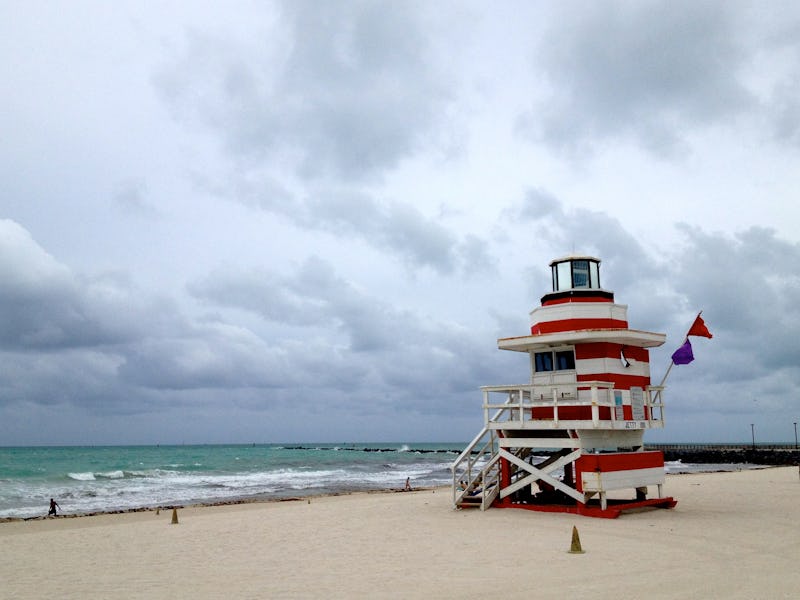Sea Lice Warning Has Been Issued in Florida for Dangerous Marine Life
These little jerks aren't lice, but they still suck.

If you jump into the Gulf of Mexico in some parts of Florida this summer, you may be in for a nasty surprise. Marine pests called sea lice are showing up in the water, stinging beachgoers and leaving some ugly looking marks in places like Pensacola, Destin, and Panama City. While it’s normal for these little jerks to show up along about 250 miles of northwest Florida coastline between March and August, this season is bad enough that the Florida Department of Health (FDOH) has posted warnings at several beaches along the Florida Panhandle to keep swimmers on their toes.
Despite the name, sea lice aren’t the bugs we’re used to, or the very scary flesh-eating sea fleas, but rather the larvae of the thimble jellyfish (Linuche unguiculata). These pinhead-sized larvae get trapped inside swimmers’ bathing suits or shirts, where they sting repeatedly, leaving inflamed welts and blisters. Because of the sudden onset of painful sores, the aftermath of sea lice is often called “bather’s eruption.”
Sea lice can leave hundreds of tiny stings on a swimmer's body.
Unfortunately, many people usually don’t notice more than a slight itch from the tiny stinging cells — called nematocysts — until it’s too late.
“The many nematocysts surrounding each larva can be triggered to fire by mechanical pressure, such as in the friction areas of a bathing suit or bathing cap, or in body creases,” reads a clinical report on the Florida Department of Health’s website. “A bather’s individual activities may also increase the amount of firing, such as contact with a surfboard, lying on the beach, or sitting on a car seat in the wet bathing suit during the trip home.”
Signs of sea lice will usually appear about four to 24 hours after exposure, usually taking the form of an itchy rash. Some swimmers report feeling a prickly sensation in the water, but some don’t notice what’s happening until they break out. Since it’s not immediately apparent that sea lice conditions are worse than usual, purple flags at lifeguard stands denote “dangerous marine life” at a beach.
This thimble jellyfish larva fired its nematocysts after a cover was put on the microscope slide. This is pretty much what happens when they get trapped inside a bathing suit.
It’s not totally clear why this year is worse, but it could be a part of the global trend in jellyfish population explosions, which scientists have linked to warmer and more acidic oceans.
“The outbreaks appear to have intensified in the last 4 years, as reflected in the number of cases reported as well as the severity of response in individual cases,” reads the FDOH report. The FDOH did not immediately respond to Inverse’s request for comment on why this year may be worse.
If you’re lucky enough to be blessed with a case of bather’s eruption, there are a few things you can do. Contrary to what your friends may tell you about jellyfish stings, it’s not necessary to pee on it. Simple household vinegar will do. And once the rash arises, a steroidal ointment like hydrocortisone or an antihistamine like diphenhydramine (Benadryl) can help soothe the itch and inflammation. But to avoid it altogether, the FDOH recommends not wearing T-shirts to keep the sea lice from being held against your skin and changing out of your bathing suit right after swimming.